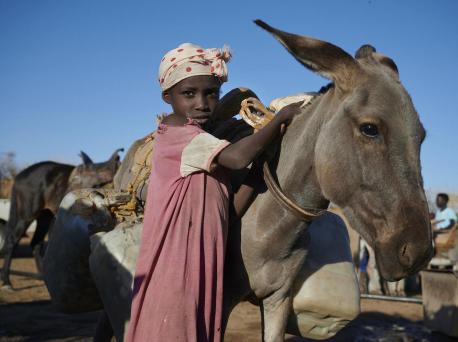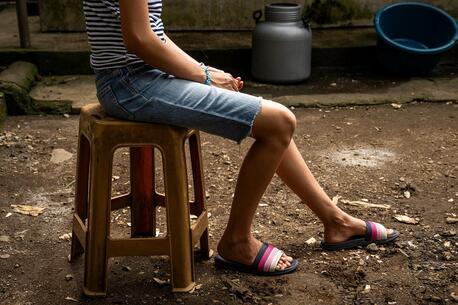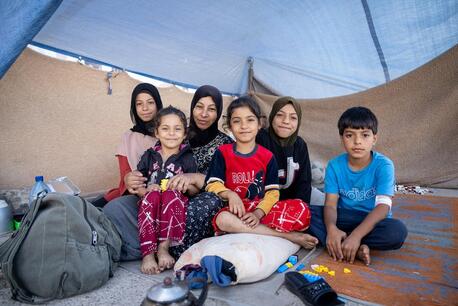
Why Child Labor Cannot Be Forgotten During COVID-19
COVID-related shocks threaten to push millions of children into extreme poverty and child labor. Social protection programs are urgently needed to help children avoid exploitation and return to school.
In just a matter of weeks, the COVID-19 outbreak has already had drastic consequences for children. Their access to education, food and health services has been dramatically affected across the globe. The impact has been so marked that the U.N. Secretary General has urged governments and donors to offset the immediate effects of the COVID-19 crisis on children.
In discussions of the pandemic to date, child labor (i.e. forms of work that are harmful to children) has played only a marginal role. Yet child labor will be an important coping mechanism for poor households experiencing COVID-related shocks. As global poverty rises, so too will the prevalence of child labor. Increased parental mortality due to COVID-19 will force children into child labor, including the worst forms such as work that harms the health and safety of children. Temporary school closures may have permanent implications for the poorest and most vulnerable. Limited budgets and reductions in services for families and children will compound the effects of the health, economic and social crisis.
We expect millions of children to become child laborers due to a rise in global poverty alone.
Even in the highly improbable scenario of a short-lived economic crisis, the consequences of this increase in child labor can last generations. We know that children who enter child labor are unlikely to stop working if their economic situation improves. Instead, they will continue to experience the implications of child labor — like less education overall and worse employment opportunities — when they are adults and start families of their own. We also know that the younger children are when they start working, the more likely they will experience chronic health issues as adults. Moreover, we have ample evidence that stress and trauma in adolescence lead to a lifetime of mental health challenges.
How parental health affects child labor
Without plausible forecasts on the extent of morbidity and mortality globally, it is impossible to gauge the rise in child labor as a direct result of the health consequences of COVID-19. However, we do know that as parents and caregivers in poor countries fall sick and die, children will take over part of their roles, including domestic work and earning responsibilities, as seen previously in Mali, Mexico and Tanzania. When desperation sets in, children can be especially vulnerable. One study from Nepal found that paternal disability or death was among the strongest observable predictors of engagement in the worst forms of child labor.
Curbing the consequences of school closures
There is ample reason to be concerned that the temporary disruption of schooling will have permanent effects, especially for the poorest. Normally, when children stop going to school and start earning an independent income, it is extremely difficult to get them to go back to school. A study of teacher strikes in Argentina, for instance, found that even temporary school closures can result in permanently lower schooling and reduced labor earnings into adulthood as children who leave school early enter low-skill occupations.
However, it may be possible to curb the consequences of school closure. The global shutdown may limit the ability of children to start earning while they are out of school, potentially mitigating the chance that children will not go back to school. Moreover, the reopening of schools can cause excitement for both students and their parents. Such excitement was widely reported in the aftermath of school closures due to the Ebola epidemic in West Africa. A World Vision report from 2015 quoted an 11-year-old in Sierra Leone: "When school finally reopened on April 14, it was the best day of my life." Indeed, in Sierra Leone, children had largely returned to class by the end of the Ebola epidemic.

Ibrahim, 13, is a seasonal agricultural child worker from Sanliurfa, Turkey. © UNICEF/UN0153927/Feyizoglu
As extreme poverty increases, so too will child labor
The economic downturn brought on by COVID-19 is widely expected to lead to an increase in global poverty. One World Bank model forecasts a rise of 40 to 60 million people living in extreme poverty this year alone. A UNU-WIDER study estimates that a 5 percent contraction in per capita incomes will lead to an additional 80 million people living in extreme poverty. Child laborers are a large share of the global population living in extreme poverty. We expect millions of additional children to be pushed into child labor as a result of an increase in extreme poverty alone.
Social protection is crucial to address child labor
Social protection programs directly addressing poverty are critical to offset the worst impacts of the COVID-19 crisis on child labor. At the time of writing, 133 countries were actively working on social protection responses, including non-contributory cash transfers. Generally, social protection programs help lower child labor outside the household and help households offset economic shocks. In Colombia, cash transfers helped offset increases in child labor due to the absence of the father. In Zambia, cash transfers helped households cushion the effect of weather shocks.
It seems inevitable that, in the medium term, most countries will experience serious fiscal crises. These crises will likely be especially severe in poor countries with a revenue basis depending disproportionately on international trade, foreign direct investment or foreign aid. We expect fiscal crises to further affect child labor through declining social protection.
Likewise, funding for other publicly provided goods — like health, education, active labor market policies and enforcement of labor market regulations — is likely to decline post-COVID-19. Each of these could have implications for child labor. Reductions in school fees, for example, have played a role in encouraging schooling, and there is evidence from India that the impact of negative economic shocks on child labor was muted in areas where schooling was more affordable. We also have evidence from Mexico and Senegal that child labor declines when school quality improves. If school fees increase or school quality deteriorates post-COVID-19, a further increase in child labor seems likely.
Moving forward
Affordable, gender-sensitive policy responses should be designed to help keep children in school and reduce reliance on child labor. Policy responses that risk exacerbating the looming increase in child labor, such as public works programs, shoud be considered carefully. Particular attention should be paid to the period shortly after lockdowns when schools reopen. This will be a critical window to prevent chldren entering paid work and community-level action is needed to ensure that every child returns to school. Children from disadvantaged backgrounds and those who lose a parent deserve special consideration and support.
Your generous gift will help UNICEF be there for children during the COVID-19 pandemic.
Jacobus de Hoop is Manager of Humanitarian Policy Research at UNICEF Innocenti. Eric V. Edmonds is Professor of Economics at Dartmouth College. His research aims to improve policy directed at child labor, forced labor and human trafficking. This story was originally published on UNICEF Connect: Evidence for Action.
Top photo: While collecting water, a young girl stands holding her donkey near a water point outside her village in Sudan. © UNICEF/Shehzad Noorani
HOW TO HELP
There are many ways to make a difference
War, famine, poverty, natural disasters — threats to the world's children keep coming. But UNICEF won't stop working to keep children healthy and safe.
UNICEF works in over 190 countries and territories — more places than any other children's organization. UNICEF has the world's largest humanitarian warehouse and, when disaster strikes, can get supplies almost anywhere within 72 hours. Constantly innovating, always advocating for a better world for children, UNICEF works to ensure that every child can grow up healthy, educated, protected and respected.
Would you like to help give all children the opportunity to reach their full potential? There are many ways to get involved.




